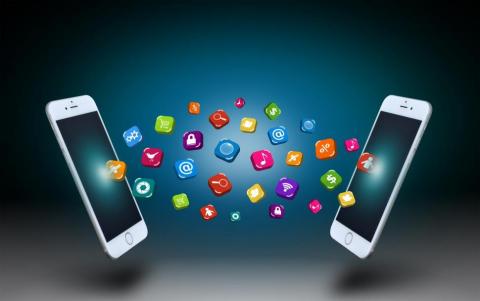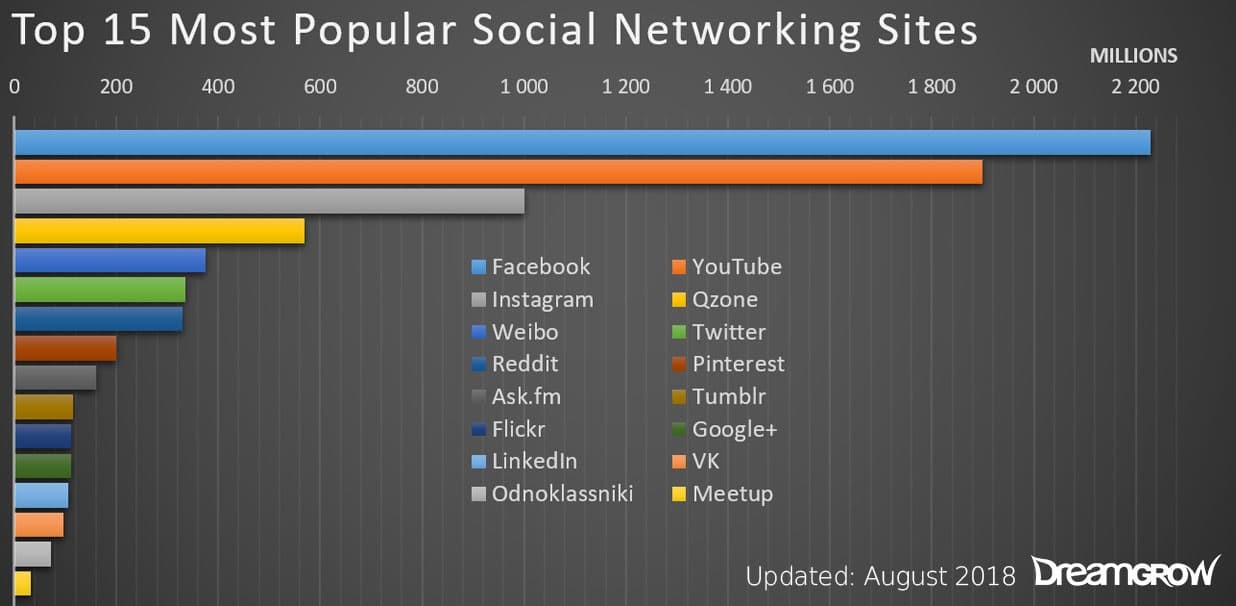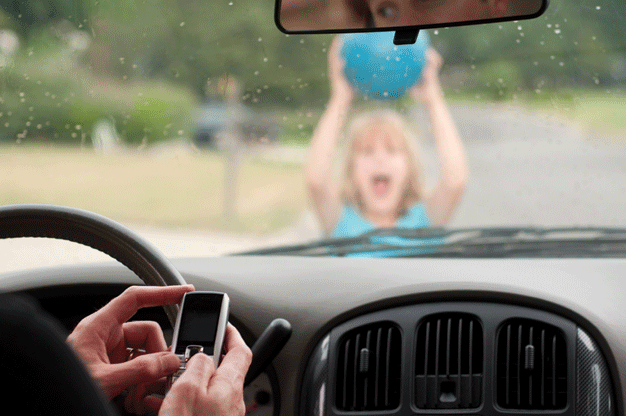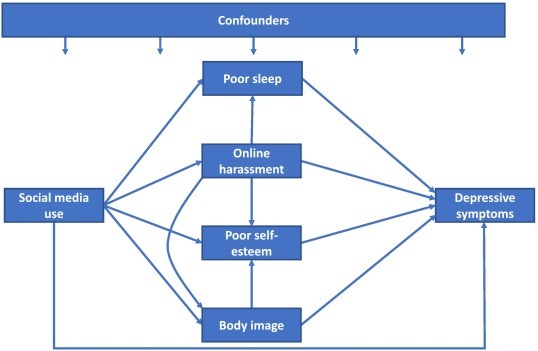Is the Growing Attachment to Smartphones and Digital Media Bad for Our Health? An initial exploration

This note served as background to a presentation delivered per the invitation of the Ecuador Mission to the United Nations at the Meeting on Social Media and Mental Health, organized by the Group of Friends on Mental Health and Well-Being, that is co-led by the Permanent Missions of the Kingdom of Bahrain, Belgium, Canada and Ecuador to the United Nations. New York City, December 12, 2019
Technological innovation is fueling momentous change in our daily lives. Indeed, as Professor Klaus Schwab, the chairman of the World Economic Forum (WEF) describes, the physical, digital and biological trends underpinning what he calls 'the fourth industrial revolution', are unleashing changes “unlike anything humankind has experienced before" (WEF 2015). At the center of it all is the Internet, anchoring digital media.
The WEF defines “digital media” as “products and services that come from the media, entertainment and information industry and its subsectors. It includes digital platforms (e.g., websites and applications), digitized content (e.g., text, audio, video and images), and services (e.g., information, entertainment, and communication) that can be accessed and consumed through different digital devices” (WEF 2016). Laptops and desktops are still the most widely used devices, but mobile devices, such as smartphones, are fast catching up in popularity and use.
The easy-to-carry and handle, multi-functional smartphone, is a common feature of modern life globally. Billions of people are now connected to these mobile devices, with unprecedented processing power, storage capacity, and access to knowledge. In emerging countries, mobile technology is allowing consumers to leapfrog from “no digital use” straight to “mobile use” (WEF 2015).
There is a growing concern that our attachment to them and “what is in them” not only captures our full attention and a good share of our time, but is creating virtual barriers that hinder direct social interaction. There are also concerns about their potential negative impact on the mental and physical health of people.
To learn about this topic, as it would not surprise anybody, I began searching the web for recent literature using the Google app in my smartphone while waiting at the dentist’s office, before turning to a laptop at home to review and write. A summary of my initial exploration follows.
Growing popularity and use
Hundreds of millions of people are using smartphones, downloading apps, and browsing web sites. Smartphone subscriptions are growing at the rate of 17-19% per year and now total about 2.1 billion users, while consumer mobile internet traffic is accelerating at more than 60% every year (WEF 2015). Smartphone ownership among young people aged 9 to 16 is also growing; for example, almost half of young people in Europe have a smartphone, according to a 2014 survey of 7 countries (Mascheroni and Ólafsson 2014).
In the US, 48% of 11-year-olds reported owning a mobile phone, and among 14-year-olds, it was 85% (unpublished data; see go.nature.com/2eeffku, cited by Odgers 2018).
Smartphones have become essential to the life of people. It is not surprising to learn, then, that an estimated 87% of US millennials say their smartphone never leaves their side (Ziv, S). Similarly, a survey by Qualtrics and Accel Partners found that 79% of US millennials put their phones right by them when they sleep, 53% wake up at least once every night to check them, and that nearly 60% check them before they use the bathroom in the morning. Data reveals that 89% of mobile phone owners use them in social gatherings, to read texts or emails, take photo or video; or to place a call (Ziv, S).
Social media, which have grown in popularity, are web platforms that allow individuals to create a profile and connect to other people to share information, ideas, interests, and other forms of expression on the site regardless of location and time. The different types of social media platforms include: Social networking (Facebook, LinkedIn, Google+); Microblogging (Twitter, Tumblr); Photo sharing (Instagram, Snapchat, Pinterest); and Video sharing (YouTube, Facebook Live, Periscope, Vimeo).
About 3.2 billion people or 40% of the world’s population are estimated to use social media. Worldwide, as shown in the graph below, Facebook tops the list with 2.23 billion active users as of mid-2018, or almost a third of the world’s population, followed by YouTube and Instagram.

Source: Graph downloaded at https://www.dreamgrow.com/top-15-most-popular-social-networking-sites/
Adult social media users spend on average 2 to 3 hours every day sharing, liking, tweeting, and updating. Use prevalence among teenagers is growing rapidly. For example, survey data indicate that on average, US teens aged 13–18 engage with digital media (from watching television or online videos to reading online and using social media) for more than 6.5 hours each day; mobile devices account for almost half this time (Rideout 2015).
What are the negative aspects of these trends?
We should not be surprised, then, that as individuals want to be connected more or less 24/7, the question that many people are asking is, how is all this impacting us, our children, and our social lives?
The graph below depicts the negative psychological effects of social media:
Source: Graph from Kelly, Zilanawala, Booker and Sacker. 2019. “Social Media Use and Adolescent Mental Health: Findings from the UK Millennium Cohort Study.” The Lancet.
The findings of a 2016 assessment by the WEF expands on these negative effects:
- Excessive digital media use can negatively influence the development of cognitive (thinking, imagining, reasoning, and remembering abilities) and behavioral (reactions or actions that we take in response to stimuli present in our environment) skills and even mental and physical health of people.
- Hyper connectivity has the potential to change patterns of social interaction, as face-to-face interaction, that is essential to the give-and-take functioning of families, communities, and workplaces, may be substituted by online interaction.
- Levels of empathy (“understanding another’s situation or feelings and experiencing a sense of their emotional state”) are declining, perhaps as a result of the decrease in face-to-face communication.
- Digital media consumption may facilitate bullying, harassment, social defamation, and hate speech because potential costs of such behavior are reduced and the ease of engaging in behaviors that harm either others or ourselves is increased (Mascheroni and Cuman 2014). Data from a global YouGov survey sponsored by Vodafone shows that of more than 4,700 teenagers surveyed worldwide, 50% felt that cyberbullying was worse than face-to-face bullying; about one-fifth reported having been cyberbullied; of those, 41% stated cyberbullying made them feel depressed, and 18% said it had made them consider suicide (Vodafone/YouGov 2015).
Mental health risks
Research indicates that excessive digital media consumption and the way digital media are being used pose a number of risks to user health and well-being, particularly increased vulnerability to addiction, and harm mental and physical health.
The findings in the 2016 assessment by the WEF identify three potential major mental health risks:
- Overload: Increased stress because of the volume and variety of social media contact,
- Invasion: Intrusion of media connections into personal life, and,
- Uncertainty: Continuous and unpredictable change in social media applications and requirements.
As I can attest from my own experience, uninterrupted access to digital media content tends to intrude in a user’s work and personal lives, making one oblivious to the difference between business and personal activity and between time on and time off.
Other potential risks identified in in the 2016 WEF assessment, include:
- Envy-related stress related to constant updates on friends’ latest professional successes, fantastic vacations, and personal triumphs.
- Decline in civility, facilitated by electronically mediated interactions that are more anonymous and often more bluntly negative than face-to-face encounters.
- Addictive behavior, as shown by evidence that some video gamers experience symptoms similar to those felt by people with substance abuse or gambling addiction and may be experiencing similar changes in brain chemistry related to the release of dopamine, an important chemical messenger in the brain that it is involved in reward, motivation, memory, attention, and even regulating body movements. When dopamine is released in large amounts, it creates feelings of pleasure and reward, which motivates you to repeat a specific behavior.
- Association with depression. Distinct patterns of social media use help explain the association of digital media with depression and anxiety symptoms. Those clustered as “Wired” and “Connected” in the research showed increased odds of elevated depression and anxiety symptoms (Shensa, Sidani, Dew, Escobar-Viera, Primack 2018). Similarly, a large longitudinal study of Americans aged 14-24 years found that heavy use of the internet and video games is associated with an increase in depression. Findings from the UK Millennium Cohort Study show that the magnitude of association between social media use and depressive symptoms was larger for girls than for boys. Poor sleep, online harassment, poor body image, and low self-esteem appear to be important pathways via which social media use is associated with depressive symptoms in young people (Kelly, Zilanawala, Booker, Sacker 2019).
- Impact on cognition. Social media use has been shown to reduce attention span and lower recall rates for information people believe they can access easily online.
- Reduced downtime. Increased social media use reduces periods of inactivity, which are critical to allow the brain to synthesize information, make connections between ideas, and develop a sense of self.
Physical health risks
Two major physical health risks from high digital media use can be highlighted:
- Increased sedentary behavior. Time spent on digital technology displaces time that could be spent on physical activity. Lack of physical activity has been identified as the fourth leading risk factor for global mortality (6% of deaths globally). Moreover, physical inactivity is estimated to be the main cause for approximately 21–25% of breast and colon cancers, 27% of diabetes cases, and approximately 30% of the ischemic heart disease burden. Childhood obesity, which is one of the most serious public health challenges of the 21st Century, is steadily affecting many low- and middle-income countries, particularly in urban settings. Globally, in 2016, the number of overweight children under the age of five was estimated to be over 41 million. Overweight and obese children are likely to stay obese into adulthood and more likely to develop noncommunicable diseases like diabetes and cardiovascular diseases at a younger age (accessed WHO data).
- Physical injury. The use of handheld smartphones is now a major cause of road traffic injuries and fatalities in the world, particularly among young drivers. Studies in the United States show that dialing and texting when driving pose a substantial increase in the risk of being involved in a crash or near crash (cited in Marquez et al 2009).
When driving light vehicles and cars:
- Placing a call on a cell phone made the risk of a crash or near-crash event 2.8 times higher than non-distracted driving.
- Talking on or listening on a cell phone made the risk of crash or near-crash event 1.3 times higher than non-distracted driving.
- Reaching for an object such as an electronic device made the risk of a crash or near-crash event 1.4 times higher than non-distracted driving.
When driving heavy vehicles and trucks:
- Placing a call on a cell phone made the risk of a crash or near-crash event 5.9 times higher than non-distracted driving.
- Talking or listening on a cell phone made no difference to the risk of a crash or near-crash event compared to non-distracted driving.
- Use of or reaching for an electronic device made the risk of a crash or near-crash event 6.7 times higher than non-distracted driving.
- Text messaging made the risk of a crash or near-crash event 23.2 times higher than non-distracted driving (large trucks made up close to 10% of all vehicles involved in fatal crashes in the US).
Impact on children’s well-being
Studies in the 2016 WEF highlighted the following potential negative impact on children:
- Excessive new media use can lead to attention problems, school difficulties, sleep disorders (particularly for children aged three to five years when exposed to violent content), and eating disorders and obesity.
- Digital media use is harmful to children if interaction with parents and others is replaced by interaction with digital media. Research has shown that brain development depends on social interaction with others during a critical period in early life and that lack of social interaction creates irreversible social and cognitive impairments throughout life.
- Healthy neurological development requires the engagement of all sensory systems, but heavy digital media consumption favors the visual and auditory systems over the vestibular (sense of balance), proprioceptive (sense of self-movement and body position), tactile (sense of touch), and attachment systems, creating possibly permanent imbalances.
- Delayed language development. Research has shown that very young children (aged 9-18 months) do not learn language by watching educational videos without active interaction with another person.
- Uncontrolled time spent on digital media often displaces time spent on academics, lowering academic achievement.
- Digital media make it easier to disseminate inaccurate as well as accurate information, and much that is online is potentially harmful to younger audiences. For example, a recent New York Times article documents how through video games and online chats sexual predators are making virtual connections with children right in their victims’ homes. The criminals strike up a conversation and gradually build trust, often posing as children, confiding in their victims with false stories of hardship or self-loathing, with the goal of duping children into sharing sexually explicit photos and videos of themselves — which they use as blackmail for more imagery, much of it increasingly graphic and violent (Bowles N, Keller MH 2019).
Impact on Adolescents
Data show an increase in mental health problems among adolescents (Odgers 2018). Worldwide, it is estimated that 10–20% of adolescents experience mental health issues (Marquez, Dutta 2018).
Recent data suggest that adolescents do perceive social media as a threat to mental wellbeing because: (1) social media is believed to cause mood and anxiety disorders for some adolescents, (2) social media is viewed as a platform for cyberbullying, and (3) the use of social media itself was often framed as a kind of 'addiction' (O’Reilly, Dogra, Whiteman, Hughes, Eruyar, Reilly 2018).
Research based on a large, nationally representative dataset in the US found that more US adolescents and young adults in the late 2010s, as compared to the mid-2000s, are experiencing serious psychological distress, major depression, and suicidal thoughts and more attempted suicide and took their own lives. These trends are weak or nonexistent among adults 26 years old and over. These trends suggest a generational shift in mood disorders and suicide-related outcomes rather than an overall increase across all ages; researchers posited that they may be associated with lack of sleep and the rise of social media in teens (Twenge, Cooper, Joiner, Duffy, Binau 2019).
How can we leverage these tools and platforms to address mental and physical health risks?
We should be clear that access to and use of digital media, while posing risks, is also beneficial to both individuals and society.
Digital tools and platforms are enabling unprecedented levels of communication, social interaction, and community building across boundaries of time, place, and social context (Seabrook, Kern, Rickard 2016). In particular, as indicated by 61% of respondents to the Implications of Digital Media Survey (WEF 2016), digital media is considered helpful to maintaining existing relationships with friends, and 45% believe it is helpful in forming new ones. Also, social media facilitates the rapid sharing of accumulated knowledge and experiences within countries and globally.
In the health sector, digital tools and platforms are now becoming an asset for individuals and healthcare practitioners, to help improve access to care and reach vulnerable populations, particularly in low-income settings where healthcare delivery systems are limited. A good example is the initiative by Mobile Technology for Community Health (MoTeCH) and the Grameen Foundation in Ghana, piloted in the Upper East Region and now being replicated in the Central, Greater Accra and Volta Regions, which allowed women with limited literacy skills to be informed in the local language about the “do’s and don’ts” in pregnancy and childbirth (Marquez 2013). Women also receive reminders on clinical appointments, due dates, and required medication and immunization through their mobile phone. This technology also enables women, their partners and families, to recognize the signs of life-threating complications during pregnancy and empowers them to seek immediate care. Other applications allow community midwives and nurses to provide rapid response and care and to follow up with health service defaulters in the community.
Mobile devices like smartphones are also giving the public, doctors, and researchers new ways to access help, monitor progress, and increase understanding of mental wellbeing (information from the National Institute of Mental Health website). For example, text messages can help contact a crisis center; apps might use the device’s built-in sensors to collect information on a user’s typical behavior patterns, including detecting a change in behavior, and provide a signal that help is needed before a crisis occurs. Some stand-alone apps could help improve memory or thinking skills, and others help the user connect to a peer counselor or to a healthcare professional. This support can be very simple but effective. A meta-analysis found, for example, that brief interventions, such as computer-assisted cognitive behavioral therapy delivered through mobile devices, improved people’s psychological well-being and reduced reported symptoms of depression and anxiety (Versluis, Verkuil, Spinhoven, van der Ploeg, Brosschot 2016).
In addition, digital media can facilitate education and life-long learning to build the skills of the future, contributing to human capital development in countries.


